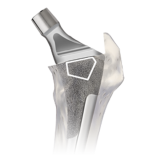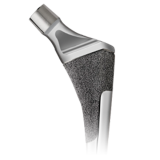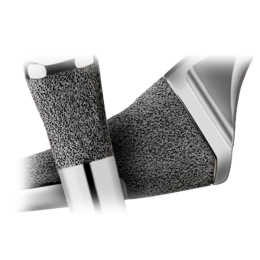Product Description
Trabecular Metal Primary Hip Prosthesis combines the proven characteristics of Trabecular Metal Technology with a bone-conserving proximal design.
Trabecular Metal Material provides a high coefficient of friction against cancellous bone for excellent scratch fit and initial implant stability. In addition, its highly porous, strut configuration nature and, open pore-configuration enables biologic in-growth, which can help lead to long-term fixation.1
Its coefficient of friction against cancellous bone is substantially higher than sintered beads.2 This facilitates direct bone apposition,3,4 creating a scratch fit that maximizes initial stability at implantation. It has a higher bone interface shear strength than sintered beads (MPa).1,5
Product Brochure
References
- Bobyn JD, Hacking SA, Chan SP, et al. Characterization of new porous tantalum biomaterial for reconstructive orthopaedics. Scientific Exhibition: 66th Annual Meeting of the American Academy of Orthopaedic Surgeons; 1999; Anaheim, CA.
- Zhang Y, Ahn PB, Fitzpatrick DC, Heiner AD, Poggie RA, Brown TD. Interfacial frictional behavior: cancellous bone, cortical bone, and a novel porous tantalum biomaterial. Journal of Musculoskeletal Research. 1999;3(4):245-251.
- Goldberg VM, Stevenson S, Feighan J, et al. Biology of grit blasted titanium alloy implants. Clin Orthop. 1995;319:122-129.
- Hacking SA, Bobyn JD, Toh K-K, et al. The osseous response to corundum blasted implant surfaces in a canine total hip arthroplasty model. Clin Orthop. 1999;364:240-253.
- Bobyn JD, Stackpool G, Toh K-K, et al. Characteristics of bone ingrowth and interface mechanics of a new porous tantalum biomaterial. J Bone Joint Surg. 1999;81-B:907-914.








